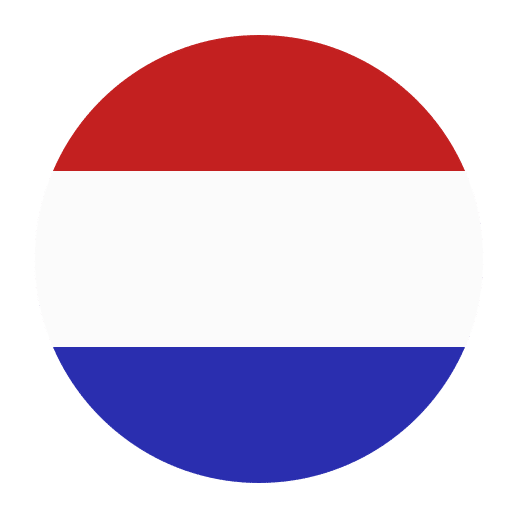Learning a new language is an enriching experience that opens up a world of opportunities, both personally and professionally. Dutch, spoken by over 23 million people primarily in the Netherlands and Belgium, is a fascinating language to learn. However, mastering Dutch can be a challenging endeavor that requires consistent practice and effective tracking of progress. Fortunately, technology offers a plethora of tools that can help language learners monitor their advancement and make the learning process more efficient and enjoyable.
Why Track Language Progress?
Before diving into the technology, it’s important to understand why tracking your language progress is crucial. Keeping track of your progress can:
1. **Provide Motivation**: Seeing tangible improvements, even if they are small, can boost your motivation to continue learning.
2. **Identify Strengths and Weaknesses**: By knowing what areas you excel in and where you need more practice, you can tailor your study sessions accordingly.
3. **Set Realistic Goals**: Tracking helps you set and achieve realistic short-term and long-term goals.
4. **Maintain Consistency**: Regularly monitoring your progress encourages a consistent study routine, which is key to language acquisition.
Utilizing Mobile Apps
Mobile applications have revolutionized language learning by making it accessible anytime, anywhere. Here are some top apps that can help you track your Dutch language progress:
Duolingo
Duolingo is one of the most popular language-learning apps globally. Its gamified approach makes learning Dutch fun and engaging. The app tracks your progress by:
– **Daily Streaks**: Encouraging you to practice every day.
– **XP Points**: Earn points as you complete lessons, which helps you gauge your progress.
– **Skill Trees**: Visual representation of your learning journey, showing which areas you have mastered and which need more attention.
Babbel
Babbel offers comprehensive courses designed by language experts. It tracks your progress through:
– **Review Manager**: Keeps track of your mistakes and prompts you to review them.
– **Completion Levels**: Shows your progression through different levels, from beginner to advanced.
– **Personalized Feedback**: Provides insights into your performance and areas for improvement.
Online Courses and Platforms
Online courses and platforms offer structured learning paths and various tracking features to monitor your progress.
Rosetta Stone
Rosetta Stone is known for its immersive learning experience. It tracks your progress by:
– **Milestones**: Marks key achievements in your learning journey.
– **Speech Recognition**: Provides feedback on your pronunciation.
– **Progress Reports**: Detailed reports showing your strengths and areas for improvement.
Coursera and EdX
These platforms offer Dutch language courses from renowned institutions. They track your progress by:
– **Quizzes and Assignments**: Regular assessments to test your understanding.
– **Certificates of Completion**: Official recognition of your achievements.
– **Discussion Forums**: Engage with other learners and instructors to gauge your progress.
Language Exchange Platforms
Language exchange platforms connect you with native Dutch speakers for practice and feedback.
Tandem
Tandem pairs you with native speakers for language exchange. It tracks your progress by:
– **Conversation History**: Review past conversations to see your improvement.
– **Goals and Milestones**: Set and achieve language goals with your language partner.
– **Corrections and Feedback**: Receive corrections in real-time to improve your language skills.
italki
italki offers one-on-one tutoring sessions with native Dutch speakers. It tracks your progress by:
– **Lesson History**: Keep track of lessons taken and topics covered.
– **Progress Reports**: Tutors provide feedback and progress reports.
– **Learning Plan**: Customized learning plans based on your goals and progress.
Flashcard Apps
Flashcards are a proven method for vocabulary retention. Modern flashcard apps offer tracking features to monitor your progress.
Anki
Anki uses spaced repetition to help you remember vocabulary. It tracks your progress by:
– **Review Counts**: Shows how many times you’ve reviewed a card.
– **Retention Rates**: Tracks how well you remember the words.
– **Custom Decks**: Create personalized decks to focus on specific areas.
Quizlet
Quizlet offers interactive flashcards and games. It tracks your progress by:
– **Study Sessions**: Logs each study session to show your activity.
– **Quiz Scores**: Tracks your performance on quizzes and tests.
– **Progress Dashboard**: Visual representation of your learning progress.
Language Proficiency Tests
Taking standardized tests can be a great way to measure your Dutch language proficiency.
NT2 (Nederlands als tweede taal)
The NT2 exams are official Dutch language proficiency tests. They track your progress by:
– **Score Reports**: Detailed scores in listening, reading, writing, and speaking.
– **Level Indicators**: Indicate your proficiency level, from A1 (beginner) to C2 (advanced).
– **Practice Tests**: Regular practice tests to measure your improvement.
Dialang
Dialang offers free language assessment tests. It tracks your progress by:
– **Diagnostic Tests**: Assess your skills in different language areas.
– **Skill Reports**: Provides detailed feedback on your strengths and weaknesses.
– **Progress Tracking**: Retake tests to see your improvement over time.
Speech Recognition Software
Pronunciation is a critical aspect of language learning. Speech recognition software can help you improve and track your pronunciation skills.
Google Translate
Google Translate offers a speech recognition feature. It tracks your progress by:
– **Pronunciation Feedback**: Provides instant feedback on your pronunciation.
– **History Log**: Keeps a record of your translations and pronunciations.
– **Voice Input**: Practice speaking and get real-time feedback.
Forvo
Forvo is a pronunciation dictionary that uses native speaker recordings. It tracks your progress by:
– **Pronunciation Ratings**: Rate your pronunciation against native speakers.
– **Practice Sessions**: Record and compare your pronunciation over time.
– **Audio History**: Review past recordings to see your improvement.
Productivity and Time Management Tools
Effective language learning requires consistent practice and good time management. Productivity tools can help you stay organized and track your study time.
Trello
Trello is a project management tool that can be adapted for language learning. It tracks your progress by:
– **Task Boards**: Create boards for different language skills and track your progress.
– **Checklists**: Set goals and check off completed tasks.
– **Calendar Integration**: Schedule study sessions and track your time.
Forest
Forest is a productivity app that helps you stay focused. It tracks your progress by:
– **Focus Sessions**: Log study sessions and track your productivity.
– **Progress Reports**: Visual representation of your focused time.
– **Goal Setting**: Set daily and weekly study goals.
Integrating Technology into Your Learning Routine
To maximize the benefits of these technological tools, it’s essential to integrate them effectively into your learning routine. Here are some tips:
Set Clear Goals
Define what you want to achieve with your Dutch language learning. Whether it’s mastering basic conversation skills, passing an exam, or becoming fluent, having clear goals will help you choose the right tools and track your progress effectively.
Create a Study Schedule
Consistency is key to language learning. Create a study schedule that fits your lifestyle and stick to it. Use productivity tools like Trello or Forest to manage your time and ensure regular practice.
Mix and Match Tools
No single tool can cover all aspects of language learning. Use a combination of mobile apps, online courses, language exchange platforms, flashcard apps, and proficiency tests to get a well-rounded learning experience.
Regularly Review Your Progress
Take time to review your progress regularly. Look at your achievements, identify areas for improvement, and adjust your learning plan accordingly. This will help you stay motivated and focused on your goals.
Seek Feedback
Feedback is crucial for improvement. Use language exchange platforms like Tandem or italki to get feedback from native speakers. Participate in online forums and discussion groups to engage with other learners and gain insights.
Conclusion
Technology has made learning Dutch more accessible and efficient than ever before. By leveraging mobile apps, online courses, language exchange platforms, flashcard apps, proficiency tests, speech recognition software, and productivity tools, you can effectively track your progress and achieve your language learning goals. Remember to set clear goals, create a consistent study schedule, mix and match tools, regularly review your progress, and seek feedback to maximize your learning experience. With the right approach and the help of technology, mastering Dutch is within your reach. Happy learning!

